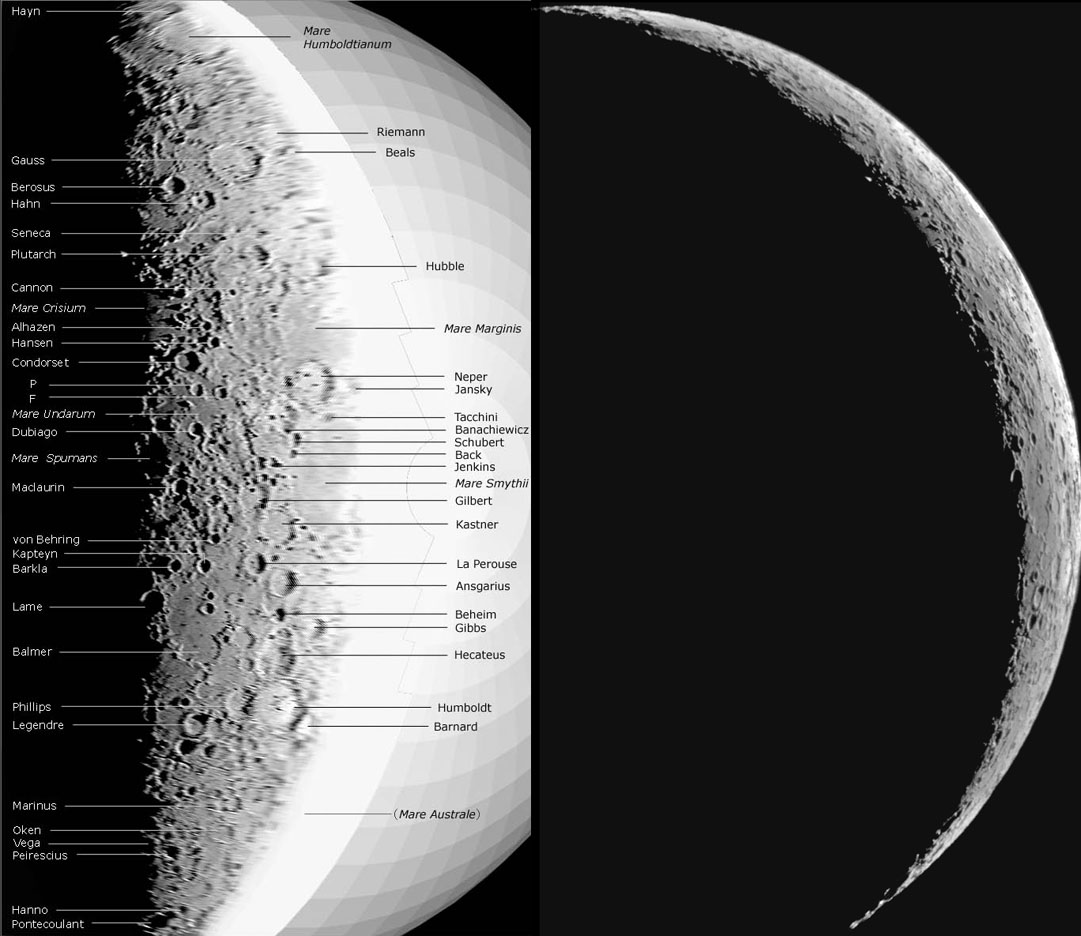
image from Stefan Lammel
When the Moon is 2.6 days old there is enough surface visible to begin identifying features - barely. The thin sliver, always low in the west, does not yet reveal Mare Crisium or the distinctive trio of Langrenus, Petavius and Furnerius so that identifications rely on recognizing less famous features. As Stefan’s remarkable normal image (right) shows there are a number of clearly shown craters, but which are they? By reprojecting the image on a sphere within PhotoShop (left), Stefan has created an overhead view which makes this limb much more interpretable. The round edges of three basins are the biggest and easiest landmarks to spot: Humboldtianum, Marginis and Smythii. The next largest features are the craters Gauss, Humboldt and Neper. And then it gets tough. I have never identified Kastner, Hecateus and many others at the telescope. But now with this image, I might.
Technical Details:
March 13, 2005. 5″ Newtonian, Nikon Coolpix 4500, TV 15mm Plossl. 5 image mosaic, 3D transform in Photoshop
Related Links:
Rükl chart: Libration Zone II, III & IV
Yesterday's LPOD: From the Earth to the Moon
Tomorrow's LPOD: Did I Dream This Rille?
COMMENTS?
Register, Log in, and join in the comments.



